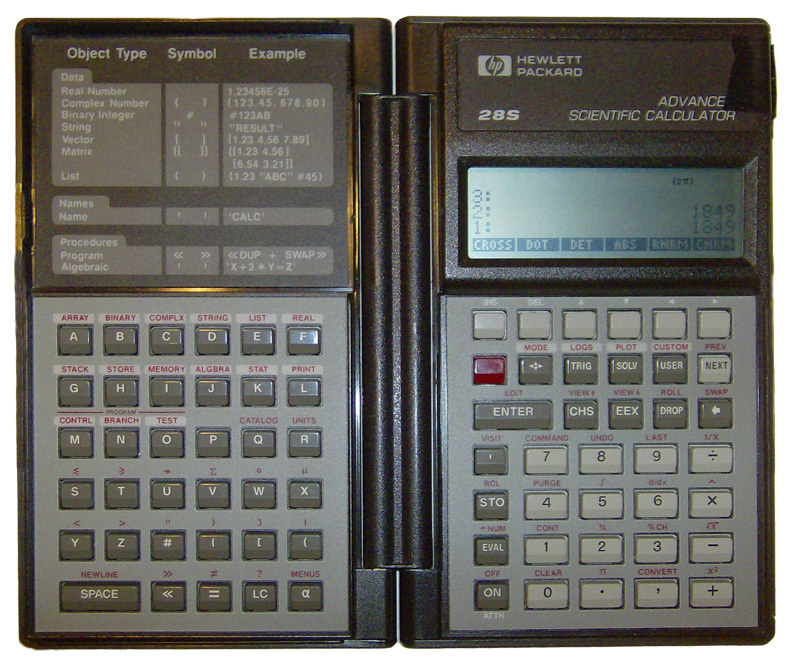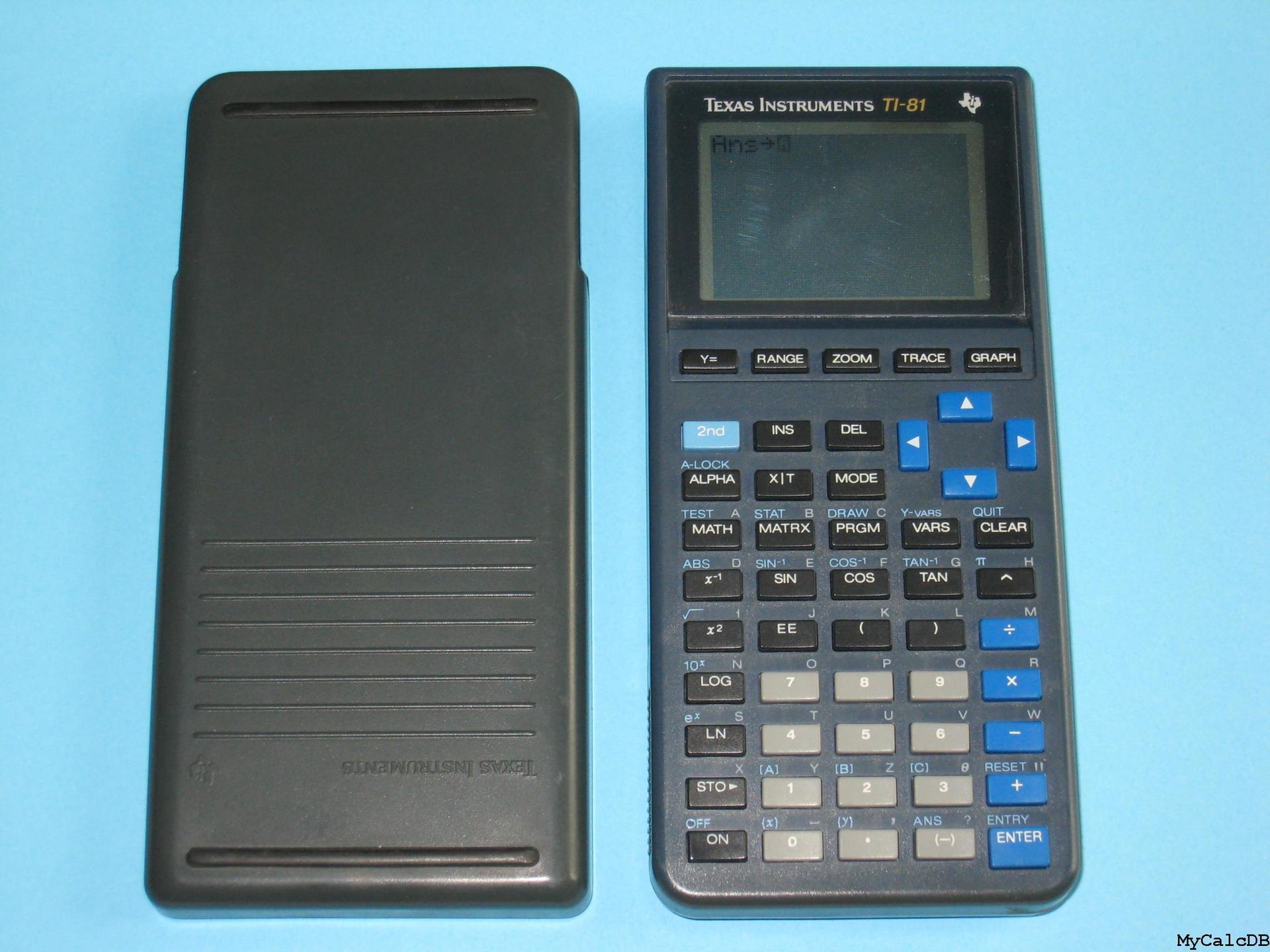Texas Instruments, or how to sell a computing device with a 40-year processor for 20 years
 ZiLOG startup was founded in 1974 by two people from Intel. At Intel, they worked on the 4004 and 8080 microprocessors , the first commercially available single crystal processors in the world. But at that time, Intel specialized in semiconductor memory chips, and the processors were not the main focus of the company.
ZiLOG startup was founded in 1974 by two people from Intel. At Intel, they worked on the 4004 and 8080 microprocessors , the first commercially available single crystal processors in the world. But at that time, Intel specialized in semiconductor memory chips, and the processors were not the main focus of the company.So, in November 1974, the main developer 4004 and 8080 Federico Fagin and Intel manager Ralph Ungermann founded their own company. Later, they will be joined by another former Intel employee, Masatoshi Sima. From early 1975 to March 1976, work was underway on the Z80 , the first product of a small startup of 12 people.
The new microprocessor was software compatible with the 8080, but had a number of improvements. It was an 8-bit chip for 8.5 thousand transistors on a 3 micron process technology. It was powered from a voltage of 5 volts and operated at a frequency of 2.5 to 8 MHz. The processor could address up to 64 KB of memory.
Zilog itself believed that the processor had a place in embedded systems: computer terminals, printers and advanced cash registers. In fact, the Z80 has gone far beyond industrial applications. It could be found in personal computers ( TRS-80 , Osborne 1 , ZX Spectrum and many others), game consoles ( ColecoVision , Game Boy , Game Boy Color ) and slot machines . Zilog was selling production licenses, but there were unauthorized copies .
')
This year Z80 turns 40 years old. It was and remains a very popular processor for embedded systems. It will not be shameful to put it in an auxiliary system of an electric kettle, where it will count down the time and perform other simple operations. However, the Z80 is still used for its intended purpose: as the central processor of a computer.
In 1996, Texas Instruments introduced the TI-83 line. Like almost all previous TI graphing calculators, inside the bulky piece of plastic was all the same Zilog Z80 processor. Here, a 20-year-old processor ran at 6 MHz. The calculator had a black and white screen with a resolution of 96 × 84 pixels and 32 KB of RAM. The calculator cost 125 dollars.
As time went. Today, some smartphones are catching up with laptops of computing power, and any mobile flagship will easily plug a top ten years old in hospital . Real-time computer graphics in video games has achieved unprecedented photo-realism, the global network has reached almost all corners of the planet, people are seriously dreaming about AI threats.
But Texas Instruments calculators remained at about the same level. Today, one of the most popular models remains the TI-84 Plus. Z80 with a frequency of 15 MHz, 128 KB of RAM, of which 24 KB are available to the user, a full megabyte of flash memory, in which the user is given 480 KB. In this case, the price is about the same as twenty years ago: $ 100 and below, if there is a good sale.
Why does this anomaly occur?
By the eighties of the last century, calculators became more accessible. They found the usual pocket form. One of the very first prototypes of a Texas Instruments handheld device was CalTech and printed the result on paper. In the future, the device got a good screen, dropped a lot of weight and learned how to work longer.
Vacuum fluorescent indicators changed to liquid crystal displays. Logic elements fit on one of the newest inventions - integrated circuits. Not always the reject rate and the cost of the chips allowed all the logic to fit on one chip, but the work went on.
At the beginning of the seventies, the simplest pocket calculator for the price resembled a smartphone for the man of our days: it was an expensive toy at a pay price of two to three weeks. By the eighties, the simplest calculators for four actions fell to a general availability of a dozen dollars. And if the price gets lower, it’s harder to earn money on devices. The competition grew, some manufacturers went into something else, for example, personal computers. By the way, in part to calculators, we owe the advent of technology to the emerging personal computers.
The rest of the companies were looking for new markets and opportunities for their devices. Here began to appear affordable programmable and graphical calculators that aimed at niche markets for science and education.
The first graphical calculator is considered a Casio fx-7000G 1985 costing $ 90. The essence of the novelty was the ability to display graphs of functions on a 96 × 64 pixel matrix display. Modest by modern standards, the device could be programmed at 422 program steps. He had 2 kilobytes of memory.
In 1986, Sharp responded with a model EL-5200 with the same price tag - $ 90. On the screen 96 × 32 pixels fit 4 lines of 16 characters. In the same year, HP released the 28C with a display resolution of 137 × 32 pixels.

Among these manufacturers there is no one that today occupies a dominant position in the US education system. He will appear on the scene a little later. In 1986, the state of Connecticut ordered 10,000 calculators from Texas Instruments (which are still ordinary at the time) for educational purposes. Perhaps, then at TI they saw a new market, but they were still waiting.
At about the same time, there was a discussion in the scientific community about whether the calculator is acceptable in the classroom. What if students just calculate the answers? On the other hand, why should they waste time on uniform calculations on paper instead of learning mathematical principles? The question is seriously investigated. For example, since 1988, The Calculator and Computer Precalculus Project has been working at Ohio State University to show educators how calculators can be used in education.
In 1989, the National Council of Teachers of Mathematics of the United States prepared the document Curriculum at School Evaluation Standards for School Mathematics. It mentions that students should be able to use the appropriate calculators. Primary school is a simple four-step calculator, but high school students should count on graphical calculators.
And here Texas Instruments begins to act. In 1990, the company released its first graphing calculator TI-81 . The user had 2400 bytes of RAM, a 96 × 64 pixel screen and a Z80 processor running at 2 MHz. Externally, the calculator is slightly reminiscent of the popular at that time in schools Casio fx-7000G.

TI-81 was followed by TI-82 , TI-82 was followed by TI-83, and so on. But it is not enough just to distribute new devices. Need broad support. Texas Instruments is beginning to help develop Teachers Teaching with Technology or T 3 , which is called the TI Church behind the eyes. Newsletters, newsgroups, the 1-800-TI-CARES telephone support line, an annual conference, and more than 100,000 teachers who received the help of evangelists — all helped to make TI calculators a standard in education.
It is not surprising that in many modern American textbooks examples are explained for calculators of one company. Many schools have one, strictly defined model of a calculator from the same manufacturer. Exam requirements are strict: no phones, and models of acceptable calculators are limited to a special list . Although most often in the lists are Casio, HP and others, and not just Texas Instruments.
The slow growth of computing power and the lack of development of TI calculator functions are easy to explain: for a radically new device, you need to rewrite the program and textbooks, and teachers and students will have to get used to the new calculator. However, there are advantages in slow growth: any smart phone today can emulate Texas Instruments calculators in Wabbitemu applications, and a large number of software written by users is available for calculators, from serious applications to games.
For 20 years, the hardware stuffing calculators Texas Instruments has changed little, and the price has not changed. This is not surprising, given the actual monopoly of TI in the US market. According to the NPD study , from July 2013 to June 2014, Texas Instruments supplied 93% of graphing calculators to the United States. The remaining 7% is Casio.
Casio has comparable to the characteristics of the TI-84 Plus model fx-9860GII and fx-9750 GII, which is about two times cheaper. And the company would very much like to show teachers the advantages of their device. But teachers and teachers of mathematics are afraid to change the routine and fear possible difficulties. Experts estimate that the cost of the Ti-84 Plus is $ 15-20, which means an extra charge of more than 50% in favor of Texas Instruments.
As for the 40-year-old Z80 processor, Texas Instruments is still trying to replace it. In 2011, the TI-Nspire CX with an ARM926EJ-S processor running at 132 MHz, 64 MB of RAM, 100 MB of memory and a 320 × 240 color display appeared. Its power is enough to launch Doom and Quake.
And still, this hundred and fifty dollar calculator pales in comparison with the filling of modern smartphones. Does it really have to cost so much?
Source: https://habr.com/ru/post/398371/
All Articles